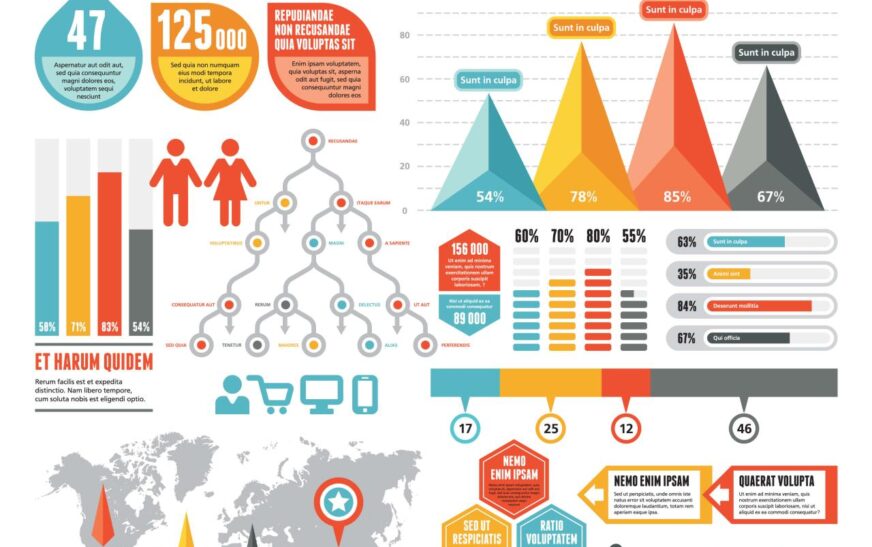How to Use Digital Tools to Optimize Your Website Speed opens the door to a world of possibilities, where your website can reach its full potential with lightning-fast speed. Dive into the realm of optimization and watch your online presence soar to new heights.
Explore the tools, techniques, and strategies that will revolutionize your website’s speed and user experience.
Importance of Website Speed Optimization
Optimizing website speed is crucial for various reasons, primarily focusing on user experience, rankings, and overall business growth.
User Experience Enhancement
- Fast-loading websites provide a better user experience, as visitors can access information quickly without waiting for pages to load.
- Slow websites frustrate users and often lead to high bounce rates, negatively impacting user engagement and conversions.
Impact on Rankings
- Website speed is a significant factor in rankings, as search engines like Google prioritize fast-loading websites in search results.
- Optimizing website speed can improve your site’s visibility and organic traffic, helping you rank higher and reach a wider audience.
Business Growth Benefits
- A fast-loading website can increase customer satisfaction, leading to higher retention rates and repeat visits.
- Improved website speed can boost conversion rates, as users are more likely to complete transactions on a responsive and efficient site.
- Enhanced user experience and performance can ultimately result in increased revenue and business success.
Understanding Digital Tools for Website Speed Optimization: How To Use Digital Tools To Optimize Your Website Speed
In the world of website speed optimization, having the right tools at your disposal is essential to improving the performance of your site. Let’s explore some of the popular digital tools used for analyzing and optimizing website speed.
Google PageSpeed Insights
Google PageSpeed Insights is a free tool provided by Google that analyzes the content of a web page and generates suggestions to make that page faster. It provides a score based on several factors such as time to above-the-fold load, time to full page load, and more.
This tool also identifies opportunities for improvement, such as leveraging browser caching, optimizing images, and eliminating render-blocking resources.
GTmetrix
GTmetrix is another popular tool that provides a comprehensive analysis of your website’s speed performance. It offers a detailed report that includes PageSpeed and YSlow scores, along with actionable recommendations to enhance site speed. GTmetrix also allows users to test from multiple locations and devices, providing a holistic view of performance optimization.
Pingdom, How to Use Digital Tools to Optimize Your Website Speed
Pingdom is a performance monitoring tool that offers insights into the speed and availability of your website. It provides real-time data on page load times, performance trends, and performance history. Pingdom also offers alerts for downtime and performance issues, allowing website owners to proactively address any issues that may impact user experience.Using these digital tools for website speed optimization is crucial in identifying performance bottlenecks and implementing necessary improvements.
By regularly analyzing your website’s speed with tools like Google PageSpeed Insights, GTmetrix, and Pingdom, you can ensure that your site is delivering a fast and seamless experience for your visitors.
Are you looking to enhance your e-commerce marketing strategies? Explore the best digital tools available that can assist you in boosting your online sales, improving customer engagement, and increasing brand visibility. By incorporating these tools into your marketing arsenal, you can stay ahead of the curve and outshine your competitors.
Check out The Best Digital Tools for E-commerce Marketing and elevate your e-commerce game!
Implementing Image Optimization Techniques
When it comes to optimizing website speed, image optimization plays a crucial role in enhancing performance. By implementing the right techniques, you can ensure that your website loads quickly and efficiently, providing a better user experience for visitors.
Compressing Images
One of the key methods for optimizing images is to compress them without compromising quality. This can be done using various tools and software that help reduce the file size of images while maintaining their visual integrity. By reducing the size of images, you can significantly improve website loading times.
Choosing the Right File Format
Selecting the appropriate file format for images is essential for optimization. JPEG is ideal for photographs and images with many colors, while PNG is better suited for images with transparency or text. By choosing the right format, you can ensure that your images are displayed correctly while keeping file sizes to a minimum.
Lazy Loading Images
Another effective technique for optimizing website speed is lazy loading images. This method delays the loading of images that are not immediately visible on the screen, which helps prioritize the loading of essential content first. By implementing lazy loading, you can reduce initial load times and improve overall website performance.
Leveraging Browser Caching and Minification

Browser caching and minification are essential techniques to optimize website speed and improve user experience. By implementing these strategies, you can significantly reduce loading times and enhance overall performance.
Browser Caching
Browser caching allows certain elements of your website, such as images, CSS files, and scripts, to be stored locally on a user’s device after the initial visit. This means that when a visitor returns to your site, their browser can retrieve these resources from the cache instead of re-downloading them from the server.
This results in faster loading times and a smoother browsing experience for users.To implement browser caching, you can configure your web server, such as Apache or Nginx, to include caching directives in the HTTP headers of your website’s responses. By setting appropriate cache-control headers, you can specify how long browsers should cache specific resources before checking for updates.
Customer experience is key in today’s digital landscape. Enhance the way you interact with your customers by utilizing digital tools that can improve customer satisfaction, loyalty, and retention. From chatbots to personalized content recommendations, there are various tools available to help you create memorable experiences for your customers.
Explore how you can Enhance Customer Experience with These Digital Tools and leave a lasting impression on your audience.
This helps reduce server load and bandwidth usage, ultimately improving website speed.
Minification
Minification involves removing unnecessary characters and white spaces from code, such as HTML, CSS, and JavaScript, to reduce file size. By eliminating redundant elements without affecting functionality, minification can significantly decrease the amount of data that needs to be transferred from the server to the user’s browser.
This leads to faster loading times and improved performance.To minify your code, you can use various online tools or plugins that automatically remove comments, white spaces, and other unnecessary characters. Additionally, you can enable minification settings in content management systems like WordPress or optimize your files manually before uploading them to your server.
Discover the top digital tools for email automation that can streamline your marketing efforts and help you reach your target audience more effectively. By utilizing these tools, you can automate your email campaigns, personalize your messages, and analyze the performance of your emails to optimize your strategies.
Check out the Top Digital Tools for Email Automation to stay ahead in the competitive digital landscape.
By incorporating minification into your optimization strategy, you can streamline your website’s code and enhance its speed and efficiency.
Utilizing Content Delivery Networks (CDNs)
When it comes to optimizing website speed globally, utilizing Content Delivery Networks (CDNs) can make a significant impact. CDNs are networks of servers distributed across different geographical locations, allowing for faster delivery of content to users around the world.
Benefits of Using CDNs
- Improved Loading Times: CDNs help in reducing latency by serving content from servers closer to the user’s location, resulting in faster loading times.
- Scalability: CDNs can handle high traffic volumes efficiently, ensuring that your website remains responsive even during peak usage periods.
- Enhanced Security: CDNs offer additional security features like DDoS protection and Web Application Firewall (WAF) to safeguard your website from threats.
Comparison of Different CDNs
| CDN | Key Features |
|---|---|
| Cloudflare | Global network, DDoS protection, Free SSL, Web Application Firewall |
| Amazon CloudFront | Low latency, High data transfer speeds, Integration with AWS services |
Best Practices for Integrating CDNs
- Choose the right CDN provider based on your specific requirements and budget.
- Ensure proper configuration of the CDN settings to maximize performance benefits.
- Regularly monitor CDN performance metrics to identify areas for improvement and optimize content delivery.
Mobile Optimization for Website Speed
Mobile optimization is crucial for website speed as more and more users access websites through their smartphones and tablets. Ensuring a fast and seamless experience on mobile devices can significantly impact user satisfaction and ultimately drive more conversions.
Responsive Design and Mobile-Friendly Layouts
Implementing responsive design is key to ensuring your website is mobile-friendly. This approach allows your website to adapt to different screen sizes and resolutions, providing a consistent and optimized experience across all devices.
- Ensure text is readable without zooming
- Optimize button sizes for easy tapping
- Minimize use of pop-ups and interstitials
Impact of AMP (Accelerated Mobile Pages)
AMP is a Google-backed project that aims to improve mobile loading speeds by creating lightweight versions of web pages. Implementing AMP can lead to faster loading times, reduced bounce rates, and improved search engine rankings.
By adopting AMP, websites can deliver a lightning-fast mobile experience, enhancing user engagement and driving more traffic.
Ultimate Conclusion
In a nutshell, optimizing your website speed is not just about loading times; it’s about creating a seamless and enjoyable experience for your visitors. Embrace the power of digital tools and witness your website flourish like never before.




